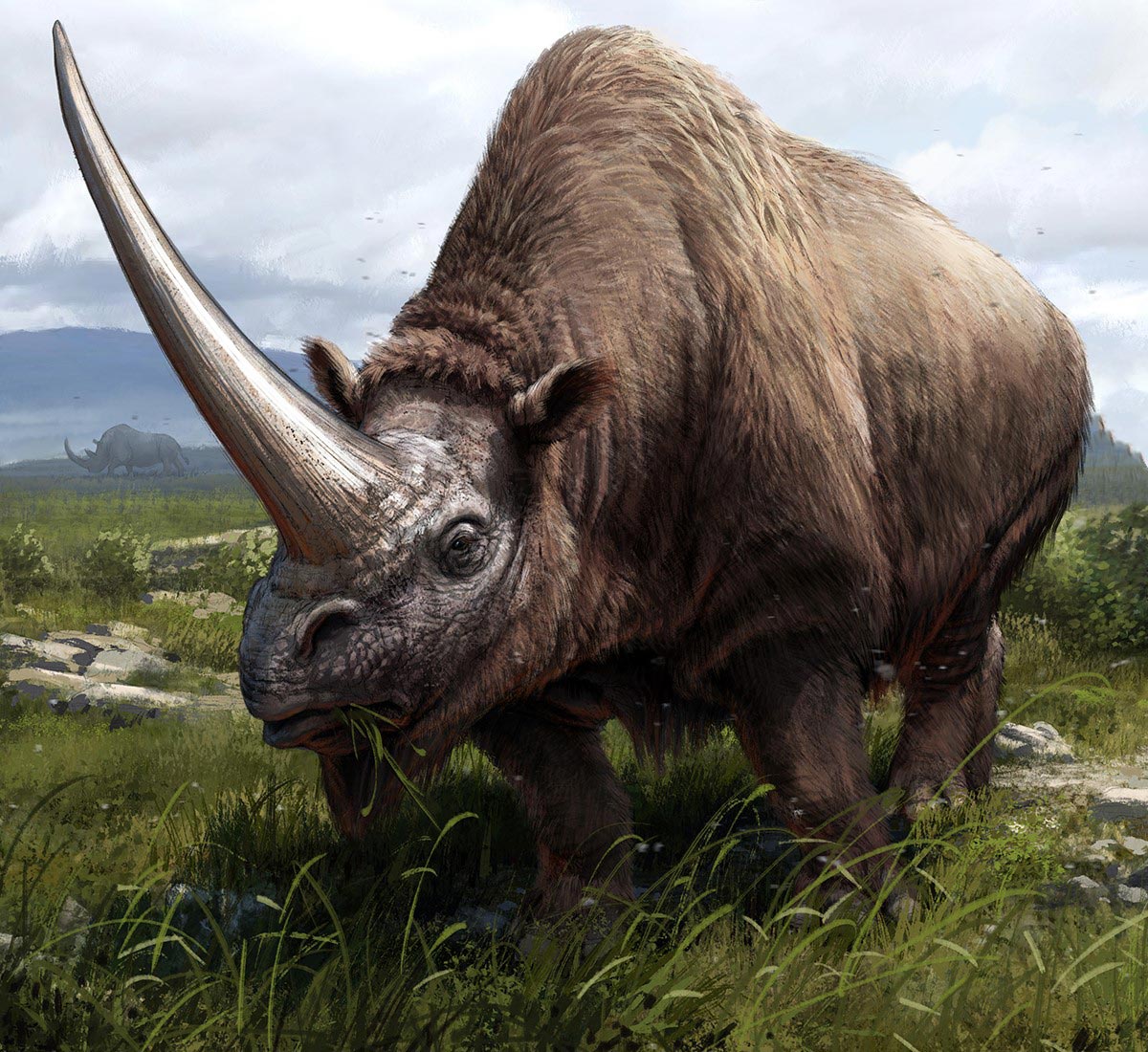

Climatic reconstructions indicate the preferred environment to have been cold and arid steppe-tundra, with large herbivores forming an important part of the feedback cycle. The palaeodiet of the woolly rhinoceros has been reconstructed using several lines of evidence. It is believed that they migrated from there to northern Asia and Europe when the Ice Age began.Ĭontroversy has long surrounded the precise dietary preference of Coelodonta as past investigations have found both grazing and browsing modes of life to be plausible. In 2011, the oldest known woolly rhinoceros fossil was discovered from 3.6 million years in the Himalayas on the cold Tibetan Plateau, suggesting it existed there during a period of general climate warmth around the earth. A close relative, Elasmotherium, had a more southern range. The woolly rhinoceros co-existed with woolly mammoths and several other extinct larger mammals of the Pleistocene megafauna. Its geographical range expanded and contracted with the alternating cold and warm cycles, forcing populations to migrate as glaciers receded.

The woolly rhinoceros roamed the exposed Doggerland and much of Northern Europe and was common in the cold, arid desert that is southern England and the North Sea today.

During Greenland Stadial 2 (the Last Glacial Maximum) the North Sea retreated northward, as sea levels were up to 125 metres (410 ft) lower than today. Several frozen specimens have also been found in Siberia, the latest in 2007.Īhe woolly rhinoceros used its horns for defensive purposes and to attract mates. The specimen, an adult female, is now on display in the Polish Academy of Sciences' Museum of Natural History in Krakow. Its shape was known only from prehistoric cave drawings until a completely preserved specimen (missing only the fur and hooves) was discovered in a tar pit in Starunia, Poland.

Cave paintings suggest a wide dark band between the front and hind legs, but the feature is not universal, and identification of pictured rhinoceroses as woolly rhinoceros is uncertain. It had thick, long fur, small ears, short, thick legs, and a stocky body. Two horns on the skull were made of keratin, the anterior horn being 61 cm (24 in) in length with a smaller horn between its eyes. The woolly rhinoceros could grow to be 2 m (6.6 ft) tall the body size was thus comparable, or slightly larger than, the extant White rhinoceros. An adult woolly rhinoceros was typically around 3 to 3.8 metres (10 to 12.5 feet) in length, with an estimated weight of around 2,721-3,175 kg (5,999-7,000 lb). The external appearance of woolly rhinos is known from mummified individuals from Siberia as well as cave paintings. A study of 40-70.000 year old DNA samples showed its closest extant relative is the Sumatran rhinoceros. Like the vast majority of rhinoceroses, the body plan of the woolly rhinoceros adhered to a conservative morphology, like the first rhinoceroses seen in the late Eocene. Stocky limbs and thick woolly pelage made it well suited to the steppe-tundra environment prevalent across the Palearctic ecozone during the Pleistocene glaciations. The woolly rhinoceros was a member of the Pleistocene megafauna.Īs the last and most derived member of the Pleistocene rhinoceros lineage, the woolly rhinoceros was supremely well adapted to its environment. The genus name Coelodonta means "cavity tooth". The woolly rhinoceros (Coelodonta antiquitatis) is an extinct species of rhinoceros that was common throughout Europe and northern Asia during the Pleistocene epoch and survived the last glacial period.


 0 kommentar(er)
0 kommentar(er)
